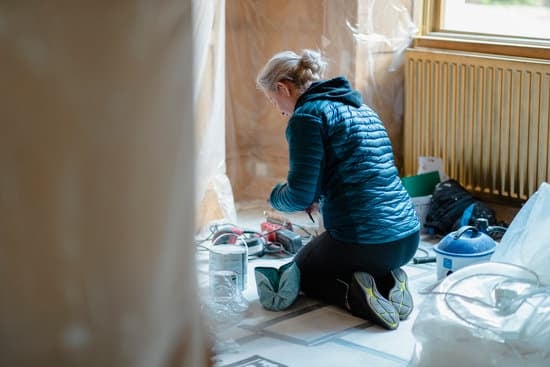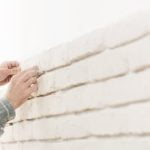Is there a federal grant for seniors home improvements? As the population of seniors in the United States continues to grow, so does the need for adequate housing that meets their unique needs. Many seniors face financial challenges when it comes to making necessary home improvements to ensure safety and accessibility. In this article, we will explore the potential for federal grants to assist seniors in making these vital improvements.
As people age, their homes may need modifications to accommodate changing physical abilities and lifestyle. From installing grab bars and ramps to widening doorways and improving lighting, home improvements can greatly impact the safety, accessibility, and overall well-being of seniors. However, the cost of these renovations can be a significant barrier for many older adults on a fixed income.
Federal grants have the potential to provide crucial funding for senior homeowners who require home improvements but may not have the means to cover the full cost themselves. In the following sections, we will discuss what federal grants are, how they work, and what types of home improvements are typically covered.
We will also explore eligibility criteria and provide guidance on how seniors can apply for these grants. Additionally, we will examine alternative sources of funding alongside success stories of seniors who have benefited from federal grants for home improvements.
The Benefits of Home Improvements for Seniors
Home improvements have a profound impact on the safety, accessibility, and overall well-being of seniors. One of the most significant benefits is increased safety within the home environment. Many seniors face mobility issues or other health challenges that make navigating their homes a potential hazard.
Simple modifications such as adding handrails, installing ramps, and improving lighting can greatly reduce the risk of accidents and falls. Additionally, bathroom modifications like walk-in showers or grab bars can make personal hygiene tasks much safer.
The accessibility of a senior’s home is also greatly enhanced through home improvements. This can mean widening doorways to accommodate wheelchairs or walkers, lowering countertops for easier access, or installing stairlifts for multi-level homes. These changes allow seniors to maintain independence within their homes and carry out daily activities with greater ease.
Furthermore, home improvements positively impact seniors’ overall well-being by providing an improved sense of comfort and security. By creating a more accessible, safe, and functional living space, seniors are better able to enjoy their homes and experience an improved quality of life. From reducing stress to promoting emotional well-being, these positive effects contribute to the importance of home improvements for seniors.
| Benefits | Impact |
|---|---|
| Increased Safety | Reduces risk of accidents and falls |
| Enhanced Accessibility | Allows for greater independence in daily activities |
| Improved Well-Being | Promotes emotional well-being and an increased quality of life |
Understanding Federal Grants
Federal grants play a crucial role in funding home improvements for seniors who may be facing financial challenges. These grants are essentially financial aid provided by the government to support various programs and initiatives, including those aimed at improving the living conditions of senior citizens. The funds from federal grants can be used to make necessary modifications to a senior’s home, addressing safety and accessibility concerns while promoting their overall well-being.
When it comes to funding home improvements for seniors, federal grants act as an essential source of financial assistance. These grants are designed to help cover the costs of necessary repairs, renovations, and modifications that will enable seniors to age in place comfortably and safely. This can include things like installing grab bars in bathrooms, widening doorways for wheelchair accessibility, or making simple yet impactful changes like adding brighter lighting to improve visibility.
In order to obtain federal grants for home improvements, seniors must understand the process of applying for these funds. It’s important to note that each grant program may have specific eligibility criteria, application procedures, and timelines for submission. Seniors should carefully review the requirements and guidelines provided by the relevant government agencies or organizations offering these grants in order to ensure they meet all necessary qualifications before applying.
Eligibility Criteria
Federal grants for home improvements for seniors can provide much-needed financial assistance to help make their living environment safer and more accessible. However, not all seniors may be eligible for these grants. It is important to understand the specific requirements and qualifications that seniors need to meet in order to qualify for federal grants for home improvements.
To be eligible for federal grants for home improvements, seniors typically need to meet the following criteria:
- Age Requirement: Seniors usually need to be at least 62 years old to qualify for federal grants for home improvements.
- Income Limit: There may be income restrictions in place, with the total household income being taken into consideration.
- Homeownership: In most cases, seniors need to own the property where the home improvements will take place.
- Health or Safety Need: The home improvements requested must generally be directly related to addressing health or safety concerns for the senior homeowner.
It’s important for seniors to carefully review the eligibility criteria for any federal grant program they are interested in applying for, as requirements can vary depending on the specific program. Additionally, meeting these initial eligibility criteria does not guarantee approval of a federal grant.
In some cases, there may be additional qualifications or documentation required when applying for federal grants for home improvements. Seniors are encouraged to seek guidance from appropriate agencies or resources that specialize in providing assistance to elderly individuals in order to ensure they meet all necessary requirements and qualifications.
Types of Home Improvements Covered
When it comes to federal grants for seniors’ home improvements, it’s important to understand the types of improvements and modifications that are typically covered. These grants aim to enhance the safety, accessibility, and overall well-being of seniors by making necessary changes to their homes. Here are some of the most common types of home improvements covered by federal grants for seniors:
Accessibility Modifications
Federal grants often cover modifications that make a senior’s home more accessible, such as installing ramps, stairlifts, or grab bars. These changes can greatly improve mobility and independence for seniors who may have difficulty navigating their homes due to physical limitations.
Bathroom Upgrades
Bathrooms can pose significant challenges for seniors, so federal grants frequently cover modifications such as walk-in showers or bathtubs, raised toilet seats, and non-slip flooring. These upgrades not only improve safety but also promote a senior’s ability to perform daily tasks with ease.
Kitchen Renovations
The kitchen is another area where federal grants can be utilized to benefit seniors. Funding may be available for lowering countertops, installing easy-to-reach cabinets and shelves, or adding adjustable stovetop controls. These modifications help seniors maintain their independence while ensuring they can safely prepare meals at home.
It’s important to note that these examples are not exhaustive, and federal grants for home improvements may also cover other essential modifications based on individual needs and circumstances. By addressing specific challenges within a senior’s living environment, these grants play a crucial role in improving their quality of life and enabling them to age in place with dignity and comfort.
How to Apply for Federal Grants
Federal grants can provide seniors with the financial assistance they need to make crucial home improvements that can enhance their safety, accessibility, and overall well-being. If you are a senior in need of home improvements and are considering applying for a federal grant, it is important to understand the process involved. Below is a step-by-step guide on how seniors can go about applying for federal grants for home improvements:
- Research Available Grants: The first step in applying for federal grants for home improvements is to research and identify the available grants that cater to seniors. This may involve visiting government websites, contacting local agencies, or seeking assistance from housing organizations.
- Evaluate Eligibility Requirements: Once you have identified potential grants, carefully review the eligibility requirements. These may include age restrictions, income limits, and specific criteria related to the type of home improvements needed.
- Prepare Required Documentation: After determining your eligibility, gather all necessary documentation required for the grant application. This could include proof of income, property ownership documents, medical assessments (if applicable), and detailed estimates or quotes for the proposed home improvements.
It is important to note that the application process for federal grants may vary depending on the specific grant program and government agency administering it. However, by following these general steps and diligently completing the application requirements, seniors can increase their chances of securing financial assistance for much-needed home improvements. Remember that seeking guidance from local community organizations or housing advocates can also be beneficial in navigating the application process effectively.
Alternatives to Federal Grants
Seniors who are in need of home improvements may not always qualify for federal grants due to specific eligibility criteria or limited funding availability. However, there are various alternatives to federal grants that can provide financial assistance for seniors’ home improvements. These alternatives include state programs, non-profit organizations, and private assistance, each offering different avenues for seniors to explore in order to make necessary modifications to their homes.
State Programs
Many states offer programs specifically designed to assist seniors with home improvements. These programs may provide financial aid, low-interest loans, or tax credits to help cover the costs of renovations and modifications. Eligibility requirements and available benefits vary by state, so seniors should research the programs offered in their specific location to determine what options are available.
Non-Profit Organizations
Numerous non-profit organizations focus on supporting seniors and improving their quality of life through various initiatives, including home improvement projects. These organizations often have resources or partnerships that can help seniors access funding for necessary home modifications. By reaching out to local non-profits or researching national organizations that cater to older adults, seniors may find alternative sources of financial assistance for their home improvement needs.
Private Assistance
In some cases, private assistance from individuals or businesses may be available to help seniors fund their home improvement projects. This could come in the form of donations, pro-bono services from contractors or construction companies, or sponsorship from local businesses. Seniors can explore these opportunities by networking within their community, reaching out to local businesses and service providers, or seeking support from family members and friends who may be willing to contribute financially towards the necessary home improvements.
By considering these alternatives to federal grants, seniors can expand their options for obtaining funding for essential home improvements that can enhance their safety, accessibility, and overall well-being.
Success Stories
In conclusion, federal grants for seniors’ home improvements can make a significant difference in the lives of older adults by providing essential funding for necessary modifications. Through these grants, seniors can enhance the safety and accessibility of their homes, ultimately improving their overall well-being and quality of life. The success stories of those who have benefited from these grants serve as a powerful testament to their positive impact and the importance of continued support for seniors in need.
One such success story is that of Mr. and Mrs. Smith, an elderly couple living on a fixed income. With the help of a federal grant, they were able to install grab bars in their bathroom, widen doorways for wheelchair access, and make necessary repairs to their roof and plumbing.
These modifications not only made their home safer but also allowed them to age in place with dignity and independence. The grant enabled them to remain in the home they love, rather than facing the prospect of moving into assisted living.
Furthermore, federal grants have also supported individuals like Ms. Johnson, a retired widow living alone. With the assistance of the grant, she was able to update her kitchen with lower countertops and easy-to-reach cabinets, making everyday tasks more manageable. Additionally, she had a stairlift installed to navigate her two-story home with ease.
These improvements not only provided peace of mind for her family but also allowed Ms. Johnson to maintain her autonomy and continue living comfortably in her own home. These success stories showcase the tangible difference that federal grants can make in the lives of seniors seeking assistance with home improvements.
Frequently Asked Questions
What Is the Ohio Housing Assistance Grant Program?
The Ohio Housing Assistance Grant Program is a state-funded initiative aimed at providing financial assistance to low- and moderate-income individuals and families in Ohio who are struggling with housing-related expenses. This program offers grants to help cover costs associated with rent, mortgage payments, utilities, and other housing-related needs.
Who Is Eligible for Government Home Improvement Grant in Wisconsin?
Eligibility for government home improvement grants in Wisconsin is typically based on income level, age, disability status, and other specific criteria outlined by the state government or local agencies. These grants are often targeted toward low-income homeowners who need financial assistance to make repairs, upgrades, or modifications to their homes in order to address health and safety issues.
What Is the Michigan Community Action Homeowner Repair Program?
The Michigan Community Action Homeowner Repair Program is designed to assist low-income homeowners in making necessary repairs and improvements to their homes.
Funds from this program may be used for critical repairs, weatherization efforts, accessibility modifications, energy efficiency upgrades, and other home improvement projects that aim to enhance the safety and livability of the property for the homeowner and their family.

I’m thrilled to have you here as a part of the Remodeling Top community. This is where my journey as an architect and remodeling enthusiast intersects with your passion for transforming houses into dream homes.





